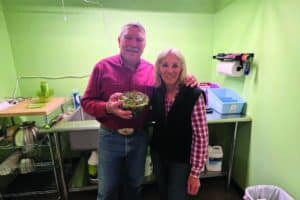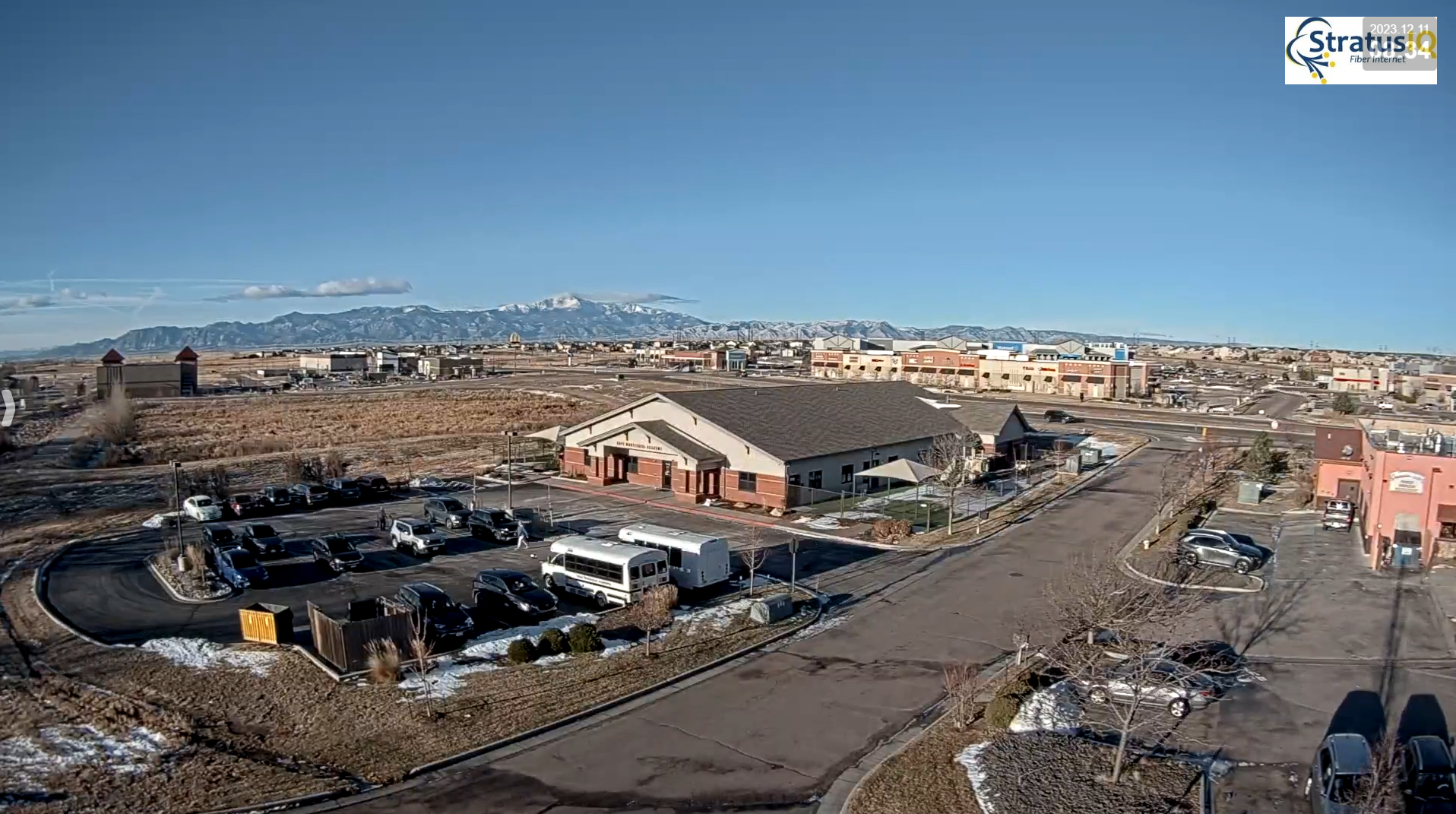The 37th Annual CCTA High Plains No-Till Conference
By Jon Huang
Roy Pfaltzgraff, a farmer in Haxtun, Colorado, was the keynote speaker and one of the more than 450 attendees at the Colorado Conservation Tillage Association’s 37th annual High Plains No-Till Conference. In early February, farmers from Kansas, Colorado and seven other states gathered in Burlington, Colorado, to encourage one another to be good stewards of the land.
Other participants included industry professionals in the agricultural sciences, banking, environmental advocates, students from Future Farmers of America and representatives from the Colorado Department of Agriculture.
“We need to challenge our thinking, and part of that is to challenge the status quo. When we challenge the status quo, it takes commitment, courage, imagination and overall dedication and hard work, and that’s why you guys are here,” Pfaltzgraff said.
For many in attendance, there was an acknowledgement that conventional tilling and monoculture farming practices that involve chronic herbicide, pesticide, and synthetic fertilizer use has come at a cost to the health of the soil. Critics of conventional tilling practices say these practices have destroyed soil structure and essential root systems necessary for healthy soil, leading to a decline in soil quality and increased dependence on the very practices contributing to its harm. With rising costs of production and the accompanying stress levels, some within the farming community have sought more sustainable ways of farming and healing the land.
Pfaltzgraff touched on the tension facing many farmers when committing to practices different from what they had been doing their whole lives. His family had farmed in Colorado for 140 years and on the same land for 70. He acknowledged that when it comes to making significant changes, the pressure of continuing a family’s generational legacy compounds the present risk of failure.
“I respect what my family has done previously, but we have to remember the tradition is peer pressure from dead people, and we have to recognize that I’m doing something different and two generations ago, if they were here today, they might look at it and go, well, actually, that makes a lot of sense, because they tried different things,” Pfaltzgraff said.
During the conference, farmers young and old shared their experiences with minimal to no-till practices with a goal to help their peers develop farming practices that not only improved soil health but bore good fruit.
Dr. Elaine Ingham, an American microbiologist and soil biologist who received a doctorate at Colorado State University, was an oft-referenced expert during the conference. Several of the speakers had taken her online Soil Food Web course for farmers, which highlighted the roles of bacteria, fungi and other micro-organisms as part of a healthy plant ecosystems. Ingham teaches that restoring healthy soil begins with reestablishing pre-existing natural processes. In doing so, it would eliminate many of the harm that large-scale industrial practices have exacerbated over the last several decades, including invasive weed growth, pesticide resistance and worsening soil moisture retention. Ingham said such practices would address climate change concerns and assist with decomposing toxins humans have introduced into the environment.
The Natural Resources Conservation Services of the U.S. Department of Agriculture discusses soil health in the next few paragraphs on its website at https://www.nrcs.usda.gov/conservation-basics/natural-resource-concerns/soils/soil-health.
The principles of soil health include maximizing presence of living roots, minimizing soil disturbance and maximizing soil cover and biodiversity.
Living plant roots play an essential role as a conduit for nutrition between the sun and surrounding atmosphere and the soil. Sunlight and carbon dioxide not only feed plants through photosynthesis, but their roots also produce substances that attract and feed beneficial microorganisms like bacteria and fungi, which, in turn, provide nutrients necessary for plants to grow and thrive. Roots also provide structure to the soil that help with water retention and reduce erosion. Conservation tillage practices encourage farmers to plant cover crops and leave plant residue to preserve soil structure, increase the soil’s organic matter and reduce water evaporation by providing more natural cover for the soil.
Improving soil health also involves maximizing an environment’s biodiversity to improve the resilience of the environment against pests and extreme weather. In addition to cover crops, this can be done through keeping old plant residue, making compost or compost extract, rotating crops and integrating livestock, which beneficially graze on plants and whose manure provide both nutrients and microorganisms to the soil.
Improving soil health also involves maximizing an environment’s biodiversity to improve the resilience of the environment against pests and extreme weather. In addition to cover crops, this can be done through keeping old plant residue, making compost or compost extract, rotating crops and integrating livestock, which beneficially graze on plants and whose manure provide both nutrients and microorganisms to the soil.
Joel Grosbach is a fifth-generation farmer from Enders, Nebraska, whose family farms 3,000 acres, raises cows and grain. Over the last few decades, they have gradually incorporated these soil health principles and decreased input costs, including their need for synthetic fertilizer and pesticides.
“One of the highest returns is the biology on the scene because it’s right there,”Grosbach said. “The only way to raise healthy plants that are resistant is going to be promoting biology and using soil to your advantage.”
As Grosbach’s own knowledge of soil science has increased, so has his appreciation for helping plants develop in their natural environment. He used the judicious use of fertilizer as an example.
“If that first initial seedling root thinks that it has everything it needs, it will disassociate from the biology because it doesn’t need it,” he said. “It’s the old ‘give a man a fish, (he) eats for a day; teach a man to fish, (he) eats forever.’ It’s the same with your plants. You don’t want to get them addicted to fertilizer from day one. Let those colonies take off. That seed doesn’t eat much, its got everything it needs anyway, let those biological relationships establish.”
Chad Wall, a cotton farmer in Texas for more than 40 years, spoke about the beneficial role of tillage, individualizing its use in different settings and sensibly integrating soil health principles in the appropriate contexts.
“Tillage is not all bad and no tillage is not all good,” he said. “Is it functioning the way we know it should or do we need to consider what sort of disturbance might be necessary?”
Others also echoed Wall’s contextualized farming approach. Corey Stephens, a corn, millet and sunflower farmer in Holly, Colorado, shared how his drier climate prevents him from growing cover crops year-round and frames his definition of success.
“It’s a myth that you can’t use cover crops in the High Plains region … now, are you going to grow 6-foot tall rye and roll it? Probably not, but you don’t have to,” Stephens said. “The fact that you put roots in the ground, even if they get 6 inches to a foot tall, if you have some roots in the ground and you’re photosynthesizing, that is what’s most important.”
Central to many conference talks was giving back to the soil what it needs to continue to be healthy and thrive and the balanced relationship between man and earth to produce good fruit.
For some farmers, the conference was about learning something new. For others, it was validation of good conservation practices toward which they had already been working. For all, it was an opportunity to gather, eat and share in the sense of responsibility to the land, the food it provides and the greater communities they serve.






